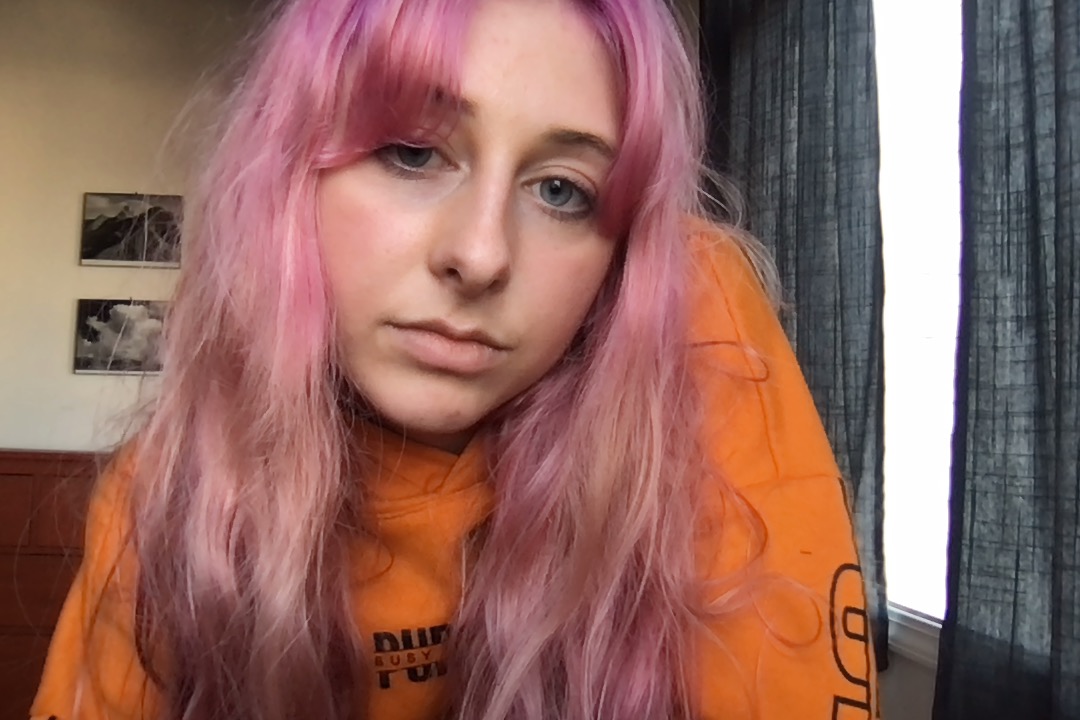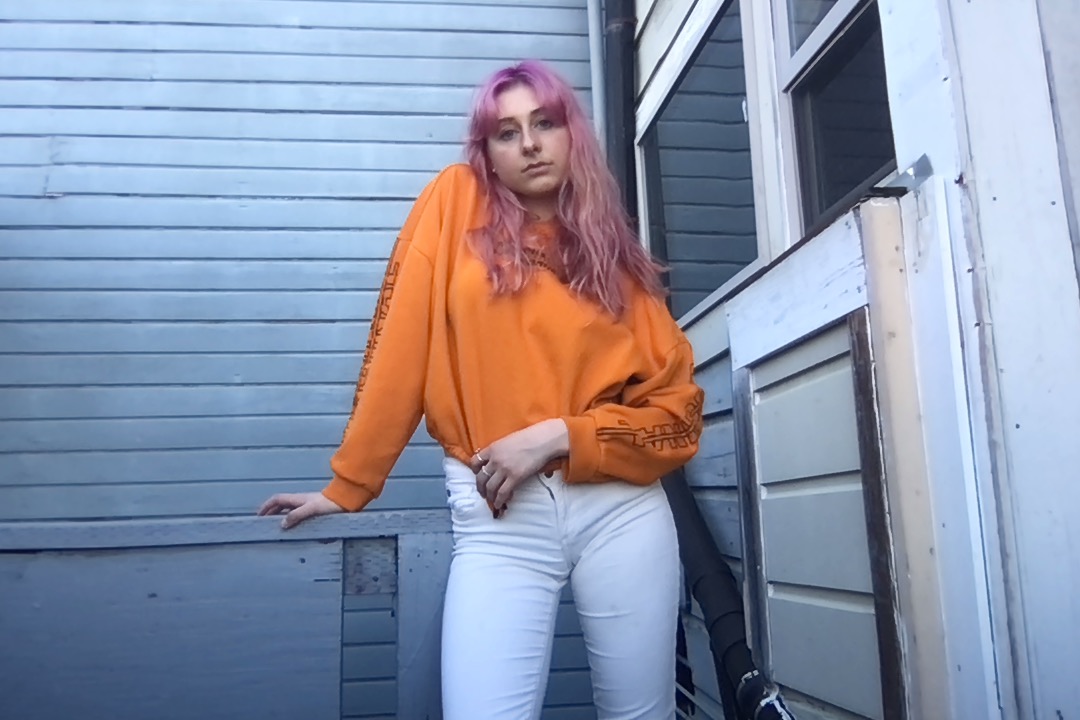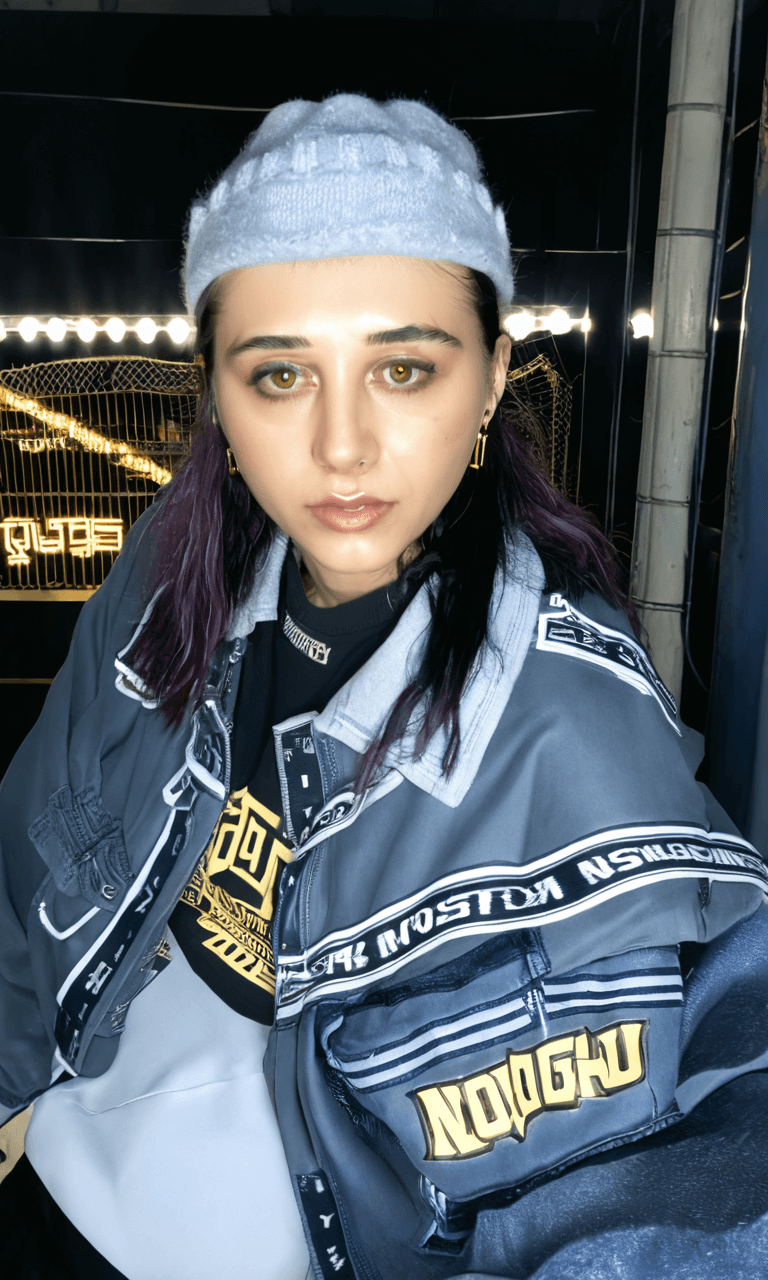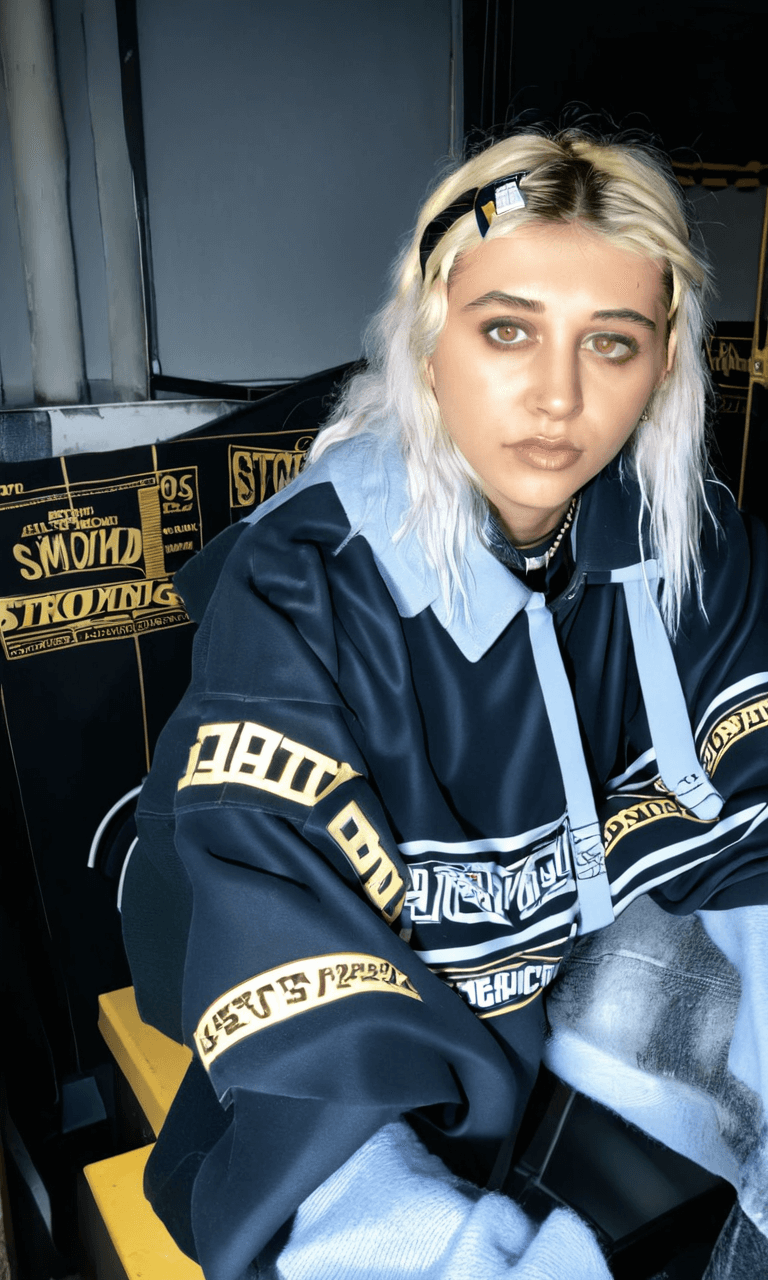
Emma-Jane MacKinnon-Lee
news
shop
feature
interviews
feed
links
DAILY IMAGE
HEY MR DJ!
ممكن معاك حقّ
¡En marcha!
Ecosystem Epistemology
The network society is under attack.
What is a network, and why does it matter — from the point of view of the attackers first. By knowing how they see it, and knowing how we all know what we know, we can get to the heart of what’s really going on here.
Do you have integrity? Are you sure? How do you even know? And how do you go about verifying the integrity of the networks you belong to, co-operate, or co-own?
These are the questions we have in common. Attackers and beneficiaries of networks alike.
With web3, these questions take on a new significance. We are incentivized to DYOR, and risk losing more than our status, reputation, and bags if we don’t take this epistemological exercise into our own hands.
Epistemology is the study of knowledge, including its nature, sources, and limitations.
It asks questions like:
What does it mean to know something or someone?
How well do you really know them?
What happened between you to give you that knowing?
Can we ever trust each other enough to trade money, power, influence, culture, and all the other things that make us enjoy or dread who we are?
Again, and again, it asks: how do we know?
At the beginning of Daft Punk’s track, “The Grid”, Jeff Bridges’ character Kevin Flynn describes how he sees the circuit boards, microchips, transistors, and electrons that make up the network: “The Grid. A digital frontier. I tried to picture clusters of information as they moved through the computer. What did they look like? Ships, motorcycles? Were the circuits like freeways? I kept dreaming of a world I thought I’d never see. And then, one day… I got in.”
We relish the description for more than the poetry and nostalgia of it. But also, that description lacks something. The network is the people who make it, experience life through it, and benefit from everything it offers.
Attackers of the network society might see more of the threat promised. A fast spreading global undercurrent, shortening the distance for mass hallucinations and disinformation. Fair enough.
But suspicion of other participants in a network, its attackers included, is the easy part. Let’s go deeper.
If you know what you want, and how to ask well structured questions, AI promises to ease most of the fears brought on by the network society and its detractors.
As a synthetic sculptor or chatslinger, you know from direct experience how Stable Diffusion and ChatGPT add value to the work you do, and help refine through each iteration the clarity of ideas and messages contained within.
ChatGPT, like similar conversational LLM interfaces in the early 2023 batch, let you as a creator target your own niche in the mass unbundling of the fashion industry, and every creative industry, by giving you more than a co-author or slot machine text generator. Like a one on one tutor and sparring partner, you get as good as you give, developing your skill at structuring input requests growing with each session. You can do more than rapidly scale up your writing output quantity, alone. Unlike earlier AI text generators, it’s much more than a party trick gimmick. The quality of your writing is refined through repeat conversations and the lessons you learn in how exactly it likes to be asked to produce the co-authored outputs you’re looking for.
Beyond better writing, communications design, content marketing, market research, SEO, social media strategy, and even ideas for your next design… it’s all ready for you to take as far as you will.
Design is more direct. Stable Diffusion continues to grow your capacity as a creator of every kind of art style, apparel design, or complex interactive media scene you can imagine, with each new fine-tuned model and extension released (like the shockingly powerful ControlNet) adding to its already worlds and markets transforming toolkit.
But it’s not all good news these days, is it?
The tendency towards mass hallucination rises from each prompt.
Visually, it’s not so much of a problem yet.
Deepfakes were expected to be the main use of more advanced image and video generators. We have been warned for years. Instead, the bulk of visually creative AI is (predictably, in hindsight) used for serious attempts at design of all kinds, storyboarding, early attempts at film editing and animation, endlessly new models for subtle variations on anime waifus, pushing new and replica styles of art (with the usual debates about what art is)… We’re all generally too busy playing with the new abilities we’ve gained to worry too seriously or to be too prudish about the ways some might abuse their power to draw out their imagination in the shadows. Turns out it’s no worse than what they could already do with graphics tablets, Photoshop, or ink and paper.
Hardware constraints have a lot to do with why we misjudged the ratio between creative liberation and deprivation. When API access, local machines, and cloud GPU hours with enough VRAM are so expensive, who has time to waste on fake stories that fail to entice or drive interest? Like the lessons from founding your own startup, you learn quickly in practice that it takes a lot more effort to get someone to listen to your idea than it’s ever worth erecting barriers to “protect” them from being “stolen”. Generative content is the same.
The world is voracious for good stories. That’s where the work, the art, and the bulk of your time goes. So, keep at it.
It’s in the text itself, the authoritative sounding claims in conversational research, and the questions we’re uncannily nudged to ask again and again — how do we know what we know? — that the risks of the rapid spread of half-false fever memes and cultish beliefs are immediately obvious. At least, it is to anyone who spends more than a few minutes learning to get useful outputs from ChatGPT, Sydney, and the like.
What we need to combat AI generated mass hallucinations is more speech, more expression, better stories, not less.
What we need, it feels obvious to say, is decentralization. Not just of creativity and the tools we use to power it. We need to ditch the old centralized mediums of creative exchange, and replace all content distribution channels with decentralized social media.
Mobile. Personal. Co-Operated. User owned. With creative AI embedded directly into the base metal at the interface and API level.
Built from the ground up with modularity in mind, Lens Protocol has become the leading protocol for the development of decentralized social media apps and platforms. Its web3 social graph lets developers, and by extension creative users of all kinds, navigate the connections and communications between us as if we actually own a stake in such a substantial part of our lives.
A user-owned, open social graph that anyone can plug into is at your finger tips.
It was designed to solve major issues in existing social media networks, where user profiles, friends, and published content were previously locked to the siloed networks which had hijacked enough scale to hold users in fear of losing the years of memories and connections we’ve generated, and thought were actually ours all along.
We have been trapped by ad targeting alogorithms in a zero-sum battle for attention. I lose, you lose, the thin skinned network barons win.
Now, we have a real choice. With Lens, since we own our data as users — and can choose or build in the open market all the tools we could ever need to navigate access — we can bring our social lives to any application built on top of Lens Protocol, or bridge it to other networks that emerge on Ethereum, L2s and beyond. If we don’t like the direction the base infrastructure or ecosystem are taking, we are free to fork any of it and choose our own path to adventure.
With it, we can counter the spread of AI induced mass hallucination by producing more content ourselves.
Meanwhile, legacy Big Tech platforms are shedding employees through rounds of massive layoffs at a record rate. It’s the mass decay of their central premise which their network architectures were built on.
It’s a good time for a reminder here for the entire tech industry, web3 included, of the way William Gibson described one of our founding ideas:
“The future is already here — it’s just not evenly distributed.”
The most trashbin fire lesson in how we know what we know about the unbundled future is unfolding in front of us, and there is so much more to be done than bring popcorn to watch the spectacle. It shows us again why top down control of base level communication infrastructure is not ok. It is playing out in real time, on screens carried in every pocket throughout the net connected world.
Since Elon took over rulership of “the world’s town square”, erratic behavior and edgelord troll decision making are the new normal. Technical “glitches” have included users not being able to post tweets, send messages, follow new accounts, and too many others to count. Third party apps have been cut off from API access, new project rollout has been chaotic at best, and while raising the banner of free speech it’s become clear what that means to Musk is bringing back previously banned accounts for QAnon supporters, neo-nazis, and racists while firing, trolling, and suspending the accounts of many who have been critical, both inside the remaining Twitter workforce and in the media, of his overlordship’s glaring missteps.
Twitter’s days are numbered. And along with it, the same is true at a different rate and for not quite as obviously extreme reasons, for the whole range of web2 legacy social media networks.
So what happens next?
We build.
What is a network, and why does it matter — from the point of view of the attackers first. By knowing how they see it, and knowing how we all know what we know, we can get to the heart of what’s really going on here.
Do you have integrity? Are you sure? How do you even know? And how do you go about verifying the integrity of the networks you belong to, co-operate, or co-own?
These are the questions we have in common. Attackers and beneficiaries of networks alike.
With web3, these questions take on a new significance. We are incentivized to DYOR, and risk losing more than our status, reputation, and bags if we don’t take this epistemological exercise into our own hands.
Epistemology is the study of knowledge, including its nature, sources, and limitations.
It asks questions like:
What does it mean to know something or someone?
How well do you really know them?
What happened between you to give you that knowing?
Can we ever trust each other enough to trade money, power, influence, culture, and all the other things that make us enjoy or dread who we are?
Again, and again, it asks: how do we know?
At the beginning of Daft Punk’s track, “The Grid”, Jeff Bridges’ character Kevin Flynn describes how he sees the circuit boards, microchips, transistors, and electrons that make up the network: “The Grid. A digital frontier. I tried to picture clusters of information as they moved through the computer. What did they look like? Ships, motorcycles? Were the circuits like freeways? I kept dreaming of a world I thought I’d never see. And then, one day… I got in.”
We relish the description for more than the poetry and nostalgia of it. But also, that description lacks something. The network is the people who make it, experience life through it, and benefit from everything it offers.
Attackers of the network society might see more of the threat promised. A fast spreading global undercurrent, shortening the distance for mass hallucinations and disinformation. Fair enough.
But suspicion of other participants in a network, its attackers included, is the easy part. Let’s go deeper.
If you know what you want, and how to ask well structured questions, AI promises to ease most of the fears brought on by the network society and its detractors.
As a synthetic sculptor or chatslinger, you know from direct experience how Stable Diffusion and ChatGPT add value to the work you do, and help refine through each iteration the clarity of ideas and messages contained within.
ChatGPT, like similar conversational LLM interfaces in the early 2023 batch, let you as a creator target your own niche in the mass unbundling of the fashion industry, and every creative industry, by giving you more than a co-author or slot machine text generator. Like a one on one tutor and sparring partner, you get as good as you give, developing your skill at structuring input requests growing with each session. You can do more than rapidly scale up your writing output quantity, alone. Unlike earlier AI text generators, it’s much more than a party trick gimmick. The quality of your writing is refined through repeat conversations and the lessons you learn in how exactly it likes to be asked to produce the co-authored outputs you’re looking for.
Beyond better writing, communications design, content marketing, market research, SEO, social media strategy, and even ideas for your next design… it’s all ready for you to take as far as you will.
Design is more direct. Stable Diffusion continues to grow your capacity as a creator of every kind of art style, apparel design, or complex interactive media scene you can imagine, with each new fine-tuned model and extension released (like the shockingly powerful ControlNet) adding to its already worlds and markets transforming toolkit.
But it’s not all good news these days, is it?
The tendency towards mass hallucination rises from each prompt.
Visually, it’s not so much of a problem yet.
Deepfakes were expected to be the main use of more advanced image and video generators. We have been warned for years. Instead, the bulk of visually creative AI is (predictably, in hindsight) used for serious attempts at design of all kinds, storyboarding, early attempts at film editing and animation, endlessly new models for subtle variations on anime waifus, pushing new and replica styles of art (with the usual debates about what art is)… We’re all generally too busy playing with the new abilities we’ve gained to worry too seriously or to be too prudish about the ways some might abuse their power to draw out their imagination in the shadows. Turns out it’s no worse than what they could already do with graphics tablets, Photoshop, or ink and paper.
Hardware constraints have a lot to do with why we misjudged the ratio between creative liberation and deprivation. When API access, local machines, and cloud GPU hours with enough VRAM are so expensive, who has time to waste on fake stories that fail to entice or drive interest? Like the lessons from founding your own startup, you learn quickly in practice that it takes a lot more effort to get someone to listen to your idea than it’s ever worth erecting barriers to “protect” them from being “stolen”. Generative content is the same.
The world is voracious for good stories. That’s where the work, the art, and the bulk of your time goes. So, keep at it.
It’s in the text itself, the authoritative sounding claims in conversational research, and the questions we’re uncannily nudged to ask again and again — how do we know what we know? — that the risks of the rapid spread of half-false fever memes and cultish beliefs are immediately obvious. At least, it is to anyone who spends more than a few minutes learning to get useful outputs from ChatGPT, Sydney, and the like.
What we need to combat AI generated mass hallucinations is more speech, more expression, better stories, not less.
What we need, it feels obvious to say, is decentralization. Not just of creativity and the tools we use to power it. We need to ditch the old centralized mediums of creative exchange, and replace all content distribution channels with decentralized social media.
Mobile. Personal. Co-Operated. User owned. With creative AI embedded directly into the base metal at the interface and API level.
Built from the ground up with modularity in mind, Lens Protocol has become the leading protocol for the development of decentralized social media apps and platforms. Its web3 social graph lets developers, and by extension creative users of all kinds, navigate the connections and communications between us as if we actually own a stake in such a substantial part of our lives.
A user-owned, open social graph that anyone can plug into is at your finger tips.
It was designed to solve major issues in existing social media networks, where user profiles, friends, and published content were previously locked to the siloed networks which had hijacked enough scale to hold users in fear of losing the years of memories and connections we’ve generated, and thought were actually ours all along.
We have been trapped by ad targeting alogorithms in a zero-sum battle for attention. I lose, you lose, the thin skinned network barons win.
Now, we have a real choice. With Lens, since we own our data as users — and can choose or build in the open market all the tools we could ever need to navigate access — we can bring our social lives to any application built on top of Lens Protocol, or bridge it to other networks that emerge on Ethereum, L2s and beyond. If we don’t like the direction the base infrastructure or ecosystem are taking, we are free to fork any of it and choose our own path to adventure.
With it, we can counter the spread of AI induced mass hallucination by producing more content ourselves.
Meanwhile, legacy Big Tech platforms are shedding employees through rounds of massive layoffs at a record rate. It’s the mass decay of their central premise which their network architectures were built on.
It’s a good time for a reminder here for the entire tech industry, web3 included, of the way William Gibson described one of our founding ideas:
“The future is already here — it’s just not evenly distributed.”
The most trashbin fire lesson in how we know what we know about the unbundled future is unfolding in front of us, and there is so much more to be done than bring popcorn to watch the spectacle. It shows us again why top down control of base level communication infrastructure is not ok. It is playing out in real time, on screens carried in every pocket throughout the net connected world.
Since Elon took over rulership of “the world’s town square”, erratic behavior and edgelord troll decision making are the new normal. Technical “glitches” have included users not being able to post tweets, send messages, follow new accounts, and too many others to count. Third party apps have been cut off from API access, new project rollout has been chaotic at best, and while raising the banner of free speech it’s become clear what that means to Musk is bringing back previously banned accounts for QAnon supporters, neo-nazis, and racists while firing, trolling, and suspending the accounts of many who have been critical, both inside the remaining Twitter workforce and in the media, of his overlordship’s glaring missteps.
Twitter’s days are numbered. And along with it, the same is true at a different rate and for not quite as obviously extreme reasons, for the whole range of web2 legacy social media networks.
So what happens next?
We build.
NEWS OF NEW
JOIN THE MAILING LIST

ENTREVISTA - 2025
DIGITALAX + FASHION ON ETHEREUM
Since 2019, I've been building, full-time, factorial combinators of the principles of web3 that scale through greater use — self sovereignty, decentralisation and open access.
שלום I'm now based in Uruguay. Connect on Lens! שלום





Got a problem with that? Speak to the agents…